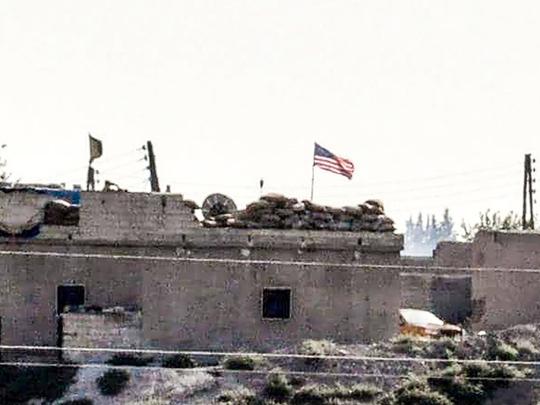
Istanbul: Clashes erupted on Friday between Syrian rebels and government forces just outside Damascus, state media and activists said, puncturing days of calm under a ceasefire brokered by Russia and the United States.
The battles did not appear to seriously threaten the truce or immediately spark wider unrest. But the fighting between Syrian troops and antigovernment rebels in the Damascus suburb of Jobar underscored the fragile hold of the ceasefire since it took effect on Monday.
The violence comes as the United Nations has stalled its efforts to bring aid to besieged civilians while the truce is in effect. The ceasefire deal was struck to allow aid agencies to reach besieged populations, in Aleppo and other areas, including embattled sites near Damascus.
The battles on Friday, however, were the fiercest reported since the ceasefire began.
The state news agency, SANA, said militants attempted to launch raids on military checkpoints near the capital. The army responded with a counter-offensive, the agency said.
Rebels, however, claimed Syrian troops attacked the area first, including a three-pronged assault that began early morning.
“The regime forces tried to advance under the cover of tanks and mortars,” said Mohammad Abu Yaman, an activist with the opposition-aligned Jobar Media Centre. “We never believed in the truce because we never trusted the regime.”
It was not possible to independently verify the accounts. But both rebel factions and the Syrian government are part of the ceasefire effort, and the clashes highlighted the challenges facing the ceasefire’s broader objectives.
The United States and Russia, which back opposing sides in the war, hoped the accord would ultimately pave the way for political negotiations to end the war. Russia backs the government of Syrian President Bashar Al Assad. The United States, meanwhile, has supported rebel groups and the Syrian opposition.
While the truce has reduced the level of violence, disputes have emerged over the most basic tenets of the deal. And world powers have struggled to influence the warring parties.
Under the agreement, combatants are expected to withdraw from Castello Road, the only way in and out of the besieged part of eastern Aleppo. Each side has accused the other of failing to pull back.
The retreat from the road would allow the UN and other aid agencies to bring life-saving assistance to desperate civilians in Aleppo, now blockaded for more than a month.
The UN and agencies have prepared 40 trucks with wheat flour and other items like rice, salt, and cooking oil. UN officials have blamed the delay primarily on the Syrian government, which has failed to provide the agency with the necessary permits.
On Friday, a coalition of at least 100 Syrian and international NGOs released a statement urging the United States and Russia to lean on the government and Syrian opposition to allow aid through during the rare period of calm.
“Sporadic and temporary cessations of violence cannot become ends in themselves,” the statement, which was signed by organisations like Oxfam and Save the Children, said.
“The lives of innocent Syrian civilians are in their hands.”
Brita Haji Hassan, president of the opposition council in Aleppo, said in an interview that residents also wanted access to Castello Road. There are also patients that need to be evacuated for urgent medical care.
The UN said that fuel and commercial traffic are, of course, important. But that it’s not under their jurisdiction,” Hassan said. He vowed that the opposition would not reject the UN aid.
“But what is happening is unreasonable,” he said. “There is no clear plan for anything.”












